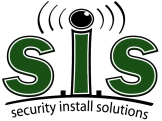Our UL file number for National Industrial Security Systems is BP10383
A national industrial security system involves alarm detection equipment installed at an area or object to be protected and remotely monitored on alarm-receiving equipment located at a (1) government contractor monitoring station, (2) national industrial monitoring station (see CRZM), (3) central station that is certified by UL for Burglar Alarm Systems (CPVX), or for Central Station Protective Signaling Services (UUFX), or for Monitoring Stations, Residential (CVSU), or (4) law enforcement station or law enforcement dispatch center.
The purpose of the system is to notify personnel responsible for responding to alarms of a condition that requires investigation. The alarm investigation is handled by government contractor investigators, by employees of a private guard company, law enforcement officers, or authorized employees of the government contractor. The response time for the investigator arrival is either 5, 15, 20, 30 or 60 minutes, and this time is specified on the Certificate. The police may also respond to an alarm, but the response time is not indicated for police response.
A system can incorporate line security equipment, which provides a high degree of supervision on the signaling line or communication channel between the protected area and the central supervising station. Line security may be designated as Standard or Encrypted. If line security is not incorporated, two independent means of signal transmission are used.
UL maintains a Certificate Verification Service (ULCVS) that allows authorized Authorities Having Jurisdiction (AHJ) to verify up-to-date Certificate information and identify companies eligible to issue Certificates as of the date of the inquiry. Only those alarm or signal system installations for which a Certificate has been properly issued are covered under UL’s Certificate Service. The verification of a Certificate on ULCVS is the only method UL provides to identify the Certificated alarm systems actively covered under its Certification and Follow-Up Service.
The Certificate is intended to provide AHJs with basic information on the installation and maintenance of an alarm system. Information on the Certificate includes the name and address of the installed system, type of system, extent of protection, remote alarm transmission means and whether or not “Line Security” equipment is employed, alarm receiving agency and location, investigative responding agency and period of time alarm is responded to, issued and expiration dates, and the alarm service company. Each Certificate also bears a unique serial number.
The Certificate serves as evidence that the alarm service company (1) is certified as furnishing protective systems of the Type indicated; (2) is authorized to issue the Certificate for the installation as its representation that the equipment is in compliance with the requirements established by UL; and (3) is subject to UL’s field countercheck program whereby periodic inspections are made of representative installations to check the correctness of Certification practices.
The limits of coverage, as determined by response time for investigation response, and for service and maintenance, are based on identification of a service territory through the use of United States Post Office ZIP codes. An alarm service company selects those ZIP codes (areas) it will serve, as verified through periodic audits of its response capability by UL. The coverage area is defined by five-digit or nine-digit ZIP codes, or some of each. A response area need not include all ZIP codes within the general area. A ZIP code is for the physical address of a Certificated installation.
Requests for service shall be received by alarm service company personnel, or a method shall be devised that will result in the initiation of service within the time interval specified in UL 2050, “National Industrial Security Systems.”
Inspections and tests of representative installations in the field are made to determine the correctness of installation of protective devices and wiring, quality of workmanship, interoperability of circuits, extent of protection and maintenance of the system.

